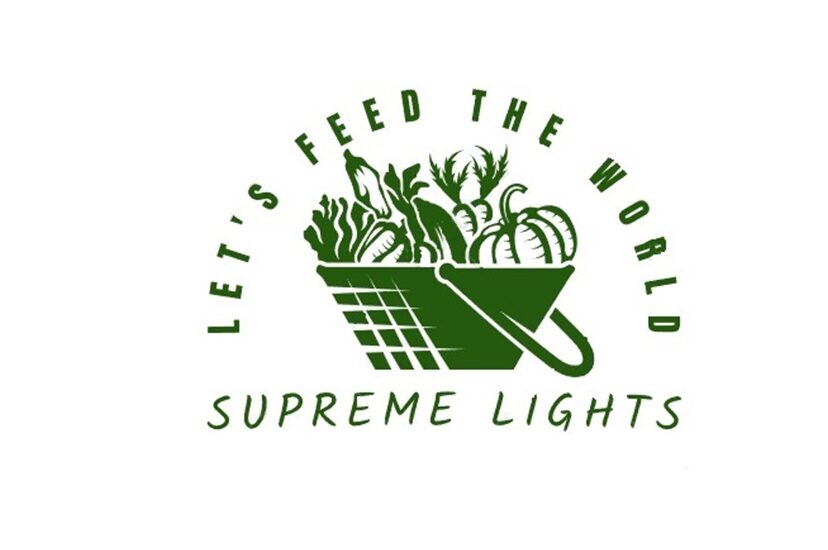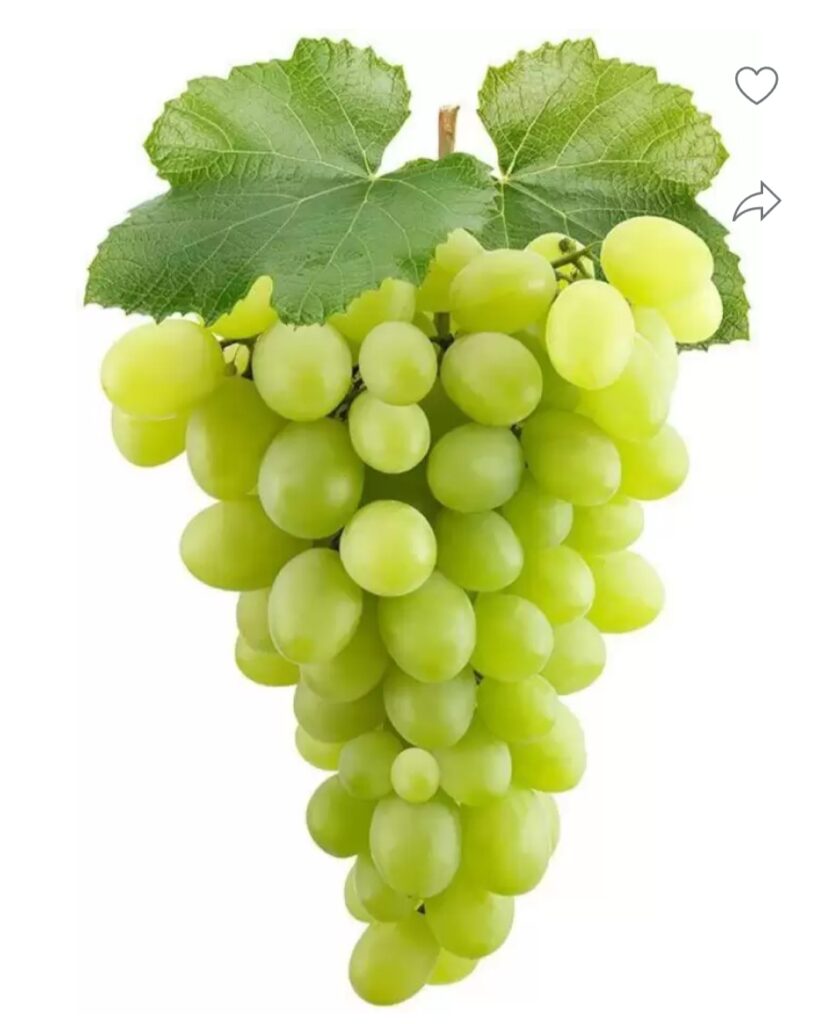
Grapes (Vitis spp), should not be confused with Grapefruit. Grape fruit is a citrus. While grape is a fruits of the Vitaceae family and genus Vitis. It is a berry, formed on a deciduous woody vines of the flowering grape plant. Viticulture is the cultivation of grapes. Grapes are a non-climacteric type of fruit, generally occurring in clusters.
The Grapes fruits may be “Black” (dark blue), red, green, crimson, yellow, orange, pink and “white” (light green) in colour.
Grapes are widely cultivated all over the world. But today, Italy, France, and the United States are the world’s top producers of grapes.
The fruit can be used as human food by eaten fresh or in dried form (as raisins, currants and sultanas). It also hold cultural significance in many parts of the world, particularly for their role in winemaking. Other grape-derived products include various types of jam, juice, vinegar and oil.
Nutritional value per 100 g (3.5 oz)
Energy. 288 kJ (69 kcal)
Carbohydrates 18.1 g
Sugars. 15.48 g
Dietary fiber. 0.9 g
Fat. 0.16 g
Protein. 0.72 g
Vitamins and minerals
Cholesterol. 0g
Sodium 2 mg
Dietary fiber. 0.9 g
Total sugars 15.5 g N/A
Added sugars. 0g
Protein 0.72 g
Vitamin D 0g
Vitamin C. 3.2 mg
Calcium 10 mg
Iron 0.36 mg
Potassium. 181 mg
Water. 81 g
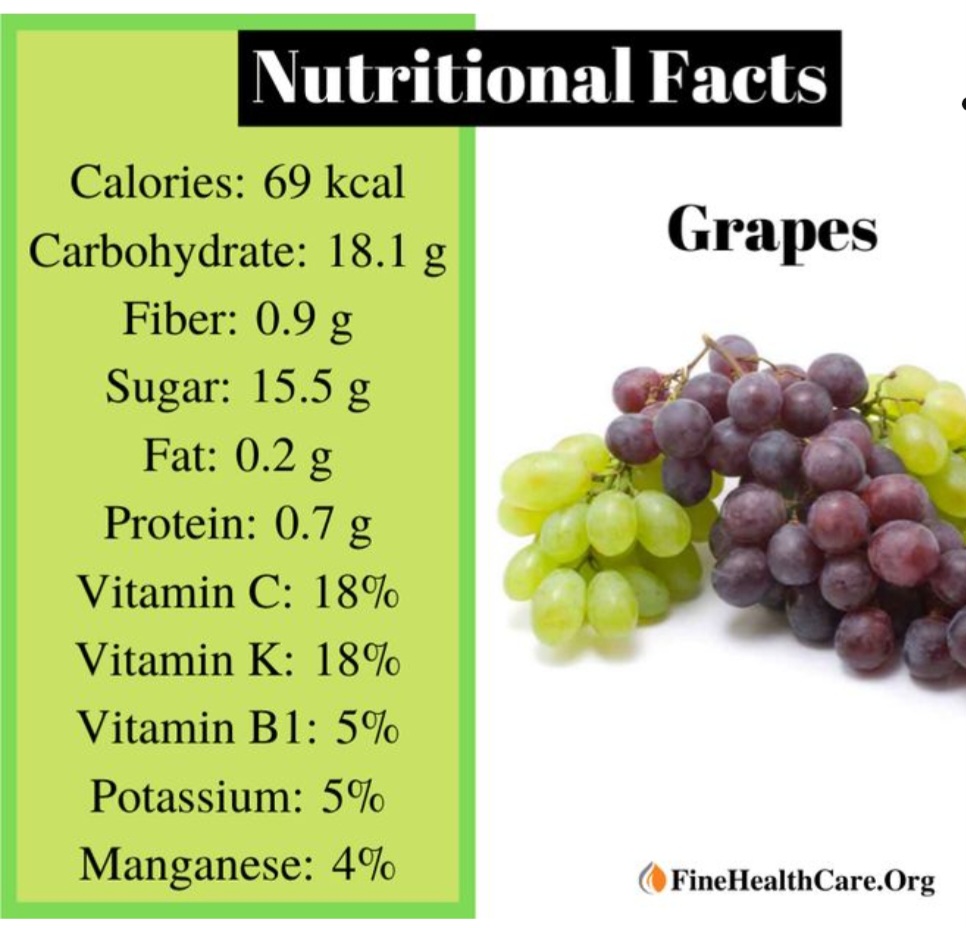
DESCRIPTION OF GRAPE PLANT
Grapes are a type of fruit that grow in clusters of 15 to 300. “White” grapes are actually green in colour and are evolutionarily derived from the purple grape. Mutations in two regulatory genes of white grapes turn off production of anthocyanins, which are responsible for the colour of purple grapes. Anthocyanins and other pigment chemicals of the larger family of polyphenols in purple grapes are responsible for the varying shades of purple in red wines. Grapes are typically an ellipsoid shape resembling a prolate spheroid.
THE PLANT: The grape plant is made up of fruit-bearing vines, leaves, roots and fruits etc.
The grape plant is usually a woody vine, climbing by means of tendrils (modified branches) and when untrained often reaching a length of 17 metres (56 feet) or more. In arid regions it may form an almost erect shrub.
THE LEAVE: The edible leaves are alternate, palmately lobed, and always tooth-edged.
FLOWERS: Small greenish flowers, in clusters, precede the fruit.
FRUITS: The fruits are called grapes. They vary in colour from almost black to green, red, blue, purple, pink, or amber. Botanically, the fruit is a berry, more or less globular, within the juicy pulp of which lie the seeds. In many varieties the fruit develops a whitish powdery coating, or bloom.
GRAPE CULTIVARS AND VARIETY
Majorly, there are two types of grapes: wine grapes and table grapes. Wine grapes are further divided into two types: white grapes and red grapes.
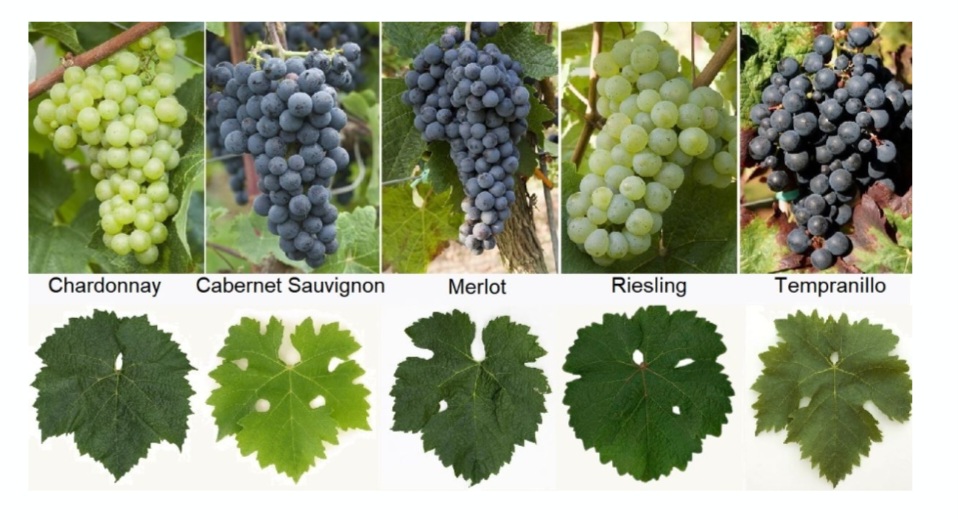
CLASSIFICATION OF GRAPE CULTIVERS
There are three basic types of grapes based on their native location:
American, European, and Muscadine. Also are hybrids ( for example Zestful grapes) made by combining American and European varieties. The Zestful varieties are of different kinds. They include lollypop, waterfall, gold chalic,chalice, catawba, Niagara etc. all with different characteristics.
To choose a variety suitable for an area, farmers must carefully select according to their USDA zone. Some varieties like cooler temperatures, while others thrive in the heat. It is important to consult local Independent Garden Center for the best varieties that suit a particular area and needs.
AMERICAN (Vitis labrusca) GRAPES: These grapes are the most cold-hardy (USDA zones 4-7), native to the NorthEastern part of the United States and Canada. They thrive in short-season growing areas. They are also called the North American table grapes and grape juice grapevines (including the Concord cultivar).
They are most often used for table grapes, juices, wine and jellies.
EUROPEAN (Vitis vinifera) GRAPES: Most domesticated grapes come from cultivars of Vitis vinifera. It is native to the Mediterranean and Central Asia. These grapes prefer a warm and dry Mediterranean-type climate (USDA zones 7-10) with a longer growing season.
This grape (Vitis vinifera) is used to produce most standard or higher quality grape wines. There are at least 5,000 reported varieties of this grape, which differ from one another in such characteristics as colour, size, and shape of berry; juice composition (including flavour); ripening time; and disease resistance. They are grown under widely varying climatic conditions, and many different processes are applied in producing wines from them. All of these possible variations contribute to the vast variety of wines available. They are also used as table grapes.
Vitis riparia: This is a wild vine of North America, is sometimes used for winemaking and for jam. It is native to the entire Eastern United States and north to Quebec.
MUSCADINE (Vitis rotundifolia) GRAPES: These are native to North and the SouthEastern United States from Delaware to the Gulf of Mexico. They grow well in the humid South (USDA zones 7-9). They are most often used for winemaking, used for jams and as table grapes etc.
Other varieties include:
Varieties that produce minor amounts of fruit and wine which are American and Asian species include:
Vitis amurensis, the most important Asian species
Vitis mustangensis (the mustang grape), found in Mississippi, Alabama, Louisiana, Texas, and Oklahoma. Cabernet Sauvignon, Sauvignon blanc, Cabernet Franc, Merlot, Grenache, Tempranillo, Riesling, and Chardonnay etc .
It is believed that the most widely planted variety is Sultana, also known as Thompson Seedless.
CLASSIFICATION OF GRAPES BASED ON DRYNESS
Grapes contain around 80% water, raisins contain just 15%. Therefore, grapes can also be classified to fresh and dried grapes.
DRIED GRAPES
Dried grapes contain more fiber and an antioxidant called phenols in dried fruit over fresh, primarily because dried fruits are much more concentrated. They also contain higher amount of sugar and have a higher glycemic index compared to fresh fruit, making them a not-so-healthy choice for consumption.
TYPES OF DRIED GRAPES
There are three classes of dried grapes. They include:
Raisins, currants and sultanas
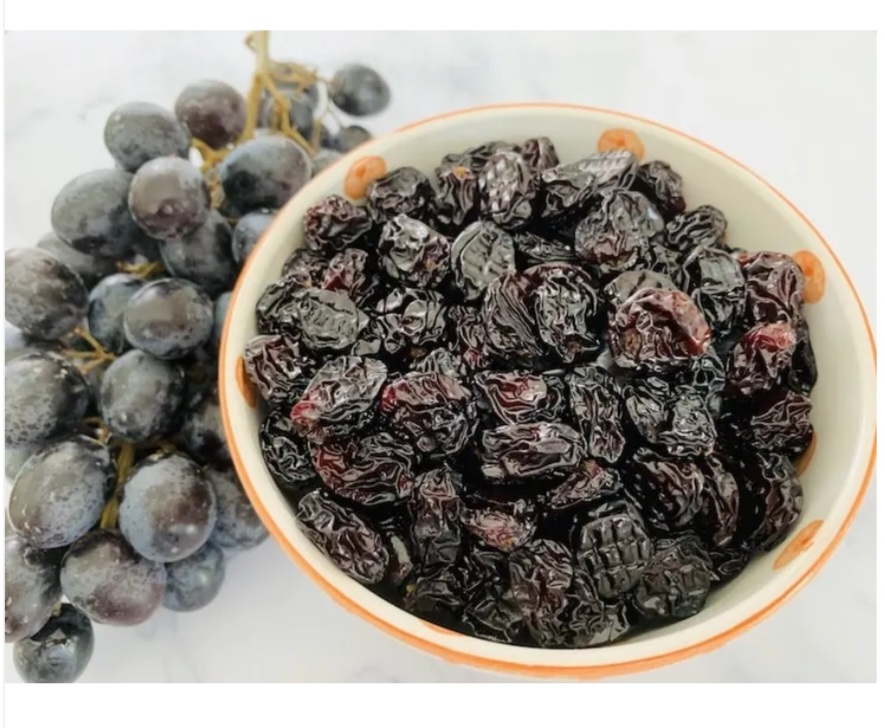
RAISINS:
In most of Europe and North America, dried grapes are referred to as “raisins” or the local equivalent. In the UK, three different varieties are recognized, forcing the EU to use the term “dried vine fruit” in official documention.
A raisin is any dried grape. While raisin is a French loanword, the word in French refers to the fresh fruit; grappe (from which the English grape is derived) refers to the bunch (as in une grappe de raisins). A raisin in French is called raisin sec (“dry grape”).
CURRANT:
A currant is a dried Zante Black Corinth grape, the name being a corruption of the French raisin de Corinthe (Corinth grape). The names of the black and red currant, now more usually blackcurrant and redcurrant, two berries unrelated to grapes, are derived from this use. Some other fruits of similar appearance are also so named, for example, Australian currant, native currant, Indian currant.
SULTANA
A sultana was originally a raisin made from Sultana grapes of Turkish origin (known as Thompson Seedless in the United States), but the word is now applied to raisins made from either white grapes or red grapes that are bleached to resemble the traditional sultana
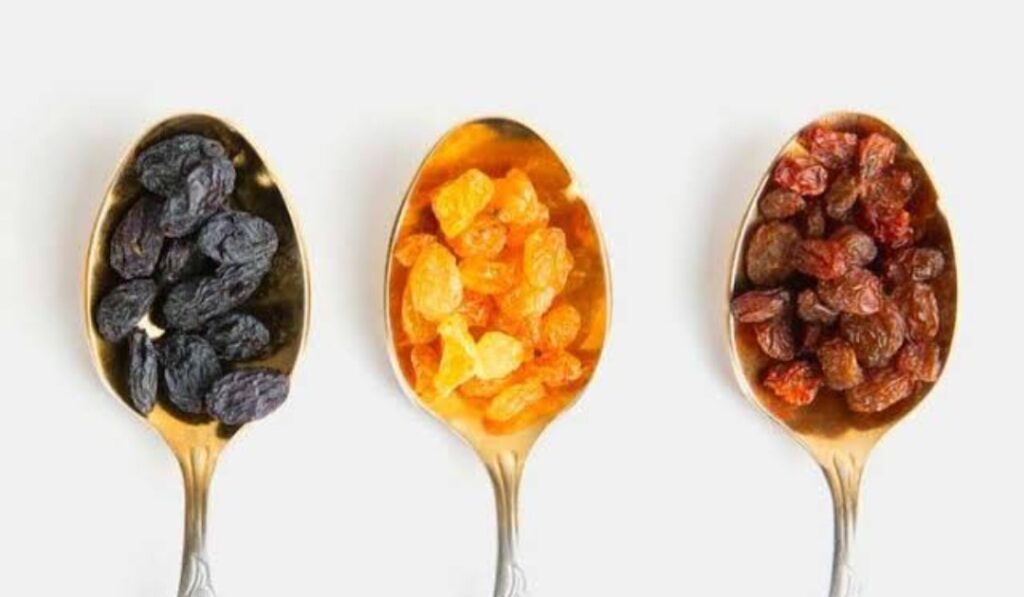
CLASSIFICATION OF GRAPES BASED ON SEEDNESS
Grapes can also be classified into seed grapes ( which are table grapes) and seedless grapes ( used for winemaking).
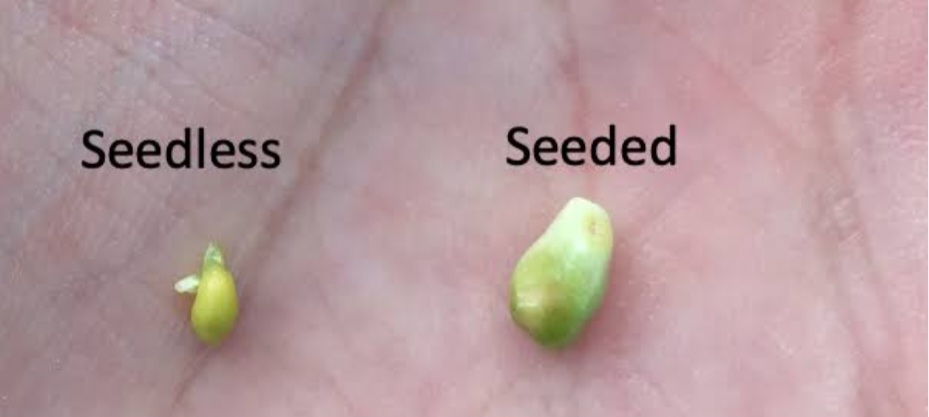
SEEDLESS GRAPES.
Seedless cultivars now make up the overwhelming majority of table grape plantings. Because they are seedless, the grapevines are vegetatively propagated by cuttings, the lack of seeds does not present a problem for reproduction. It is an issue for breeders, who must either use a seeded variety as the female parent or rescue embryos early in development using tissue culture techniques.
There are several sources of the seedlessness trait, and essentially all commercial cultivators get it from one of three sources: Thompson Seedless, Russian Seedless, and Black Monukka, all being cultivars of Vitis vinifera. There are currently more than a dozen varieties of seedless grapes. Several, such as Einset Seedless, Benjamin Gunnels’s Prime seedless grapes, Reliance, and Venus, have been specifically cultivated for hardiness and quality in the relatively cold climates of northeastern United States and southern Ontario.
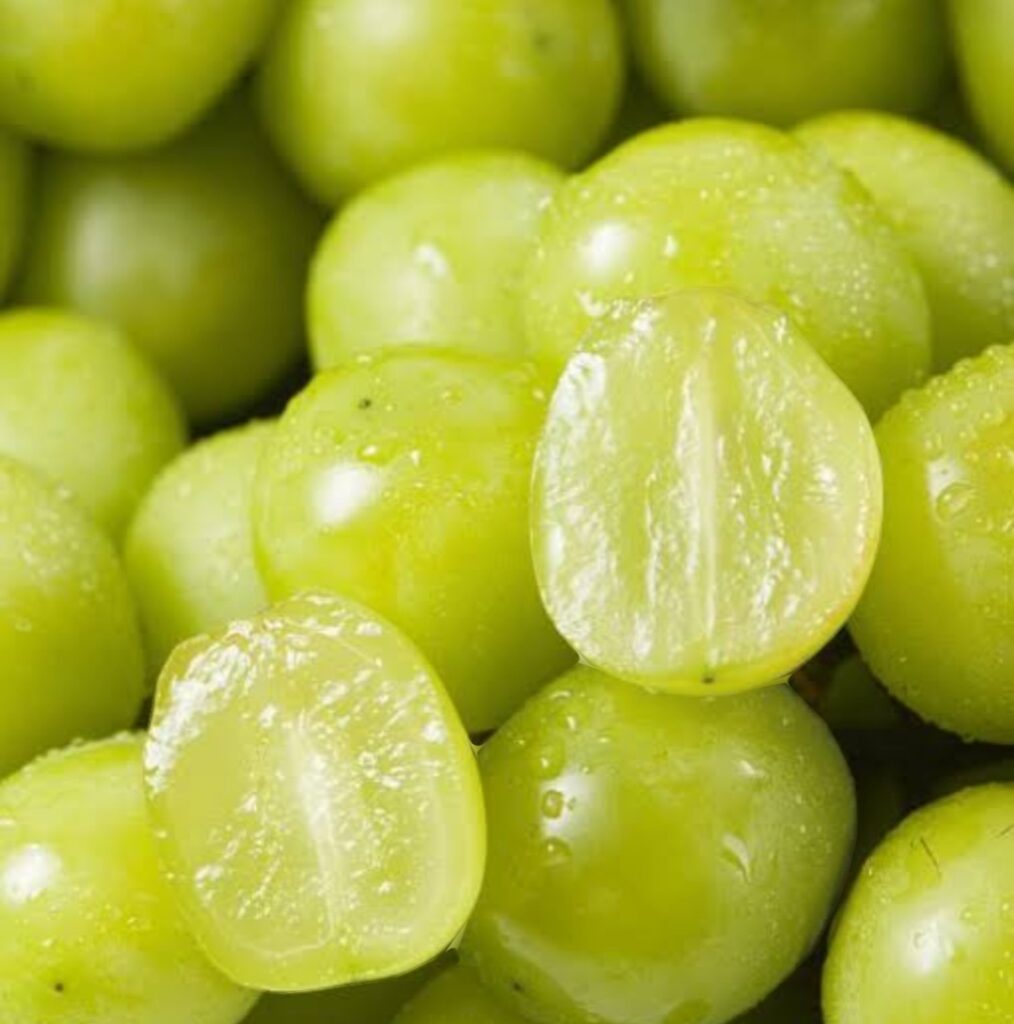
An offset to the improved eating quality of seedlessness is the loss of potential health benefits provided by the enriched phytochemical
content of grape seeds.
These categories are based on their intended method of consumption: grapes that are eaten raw (table grapes), or grapes that are used to make wine (wine grapes). Table grape cultivars normally have large, seedless fruit and thin skins. Wine grapes are smaller (in comparison to table grapes), usually contains seeds, and have thicker skins (a desirable characteristic in making wine). Most of the aroma in wine is from the skin. Wine grapes tend to have a high sugar content. They are harvested at peak sugar levels (approximately 24% sugar by weight.) In comparison, commercially produced “100% grape juice” made from table grapes are normally around 15% sugar by weight.
CLASSIFICATION OF GRAPES BASED ON SCALE OF PRODUCTION
Grapes can be classified into small scale backyard grapes and commercial grapes.
COMMERCIAL GRAPES
Commercially cultivated grapes can usually be classified as either table or wine grapes, based on their intended method of consumption: eaten raw (table grapes) or used to make wine (wine grapes).
The sweetness of grapes depends on when they are harvested, as they do not continue to ripen once picked. While almost all of them belong to the same species, Vitis vinifera ( table and wine grapes) have significant differences, brought about through selective breeding. Table grape cultivars tend to have large, seedless fruit (see below) with relatively thin skin. Wine grapes are smaller, usually seeded, and have relatively thick skins (a desirable characteristic in winemaking, since much of the aroma in wine comes from the skin). Wine grapes also tend to be very sweet. They are harvested at the time when their juice is approximately 24% sugar by weight. By comparison, commercially produced “100% grape juice”, made from table grapes, is usually around 15% sugar by weight.
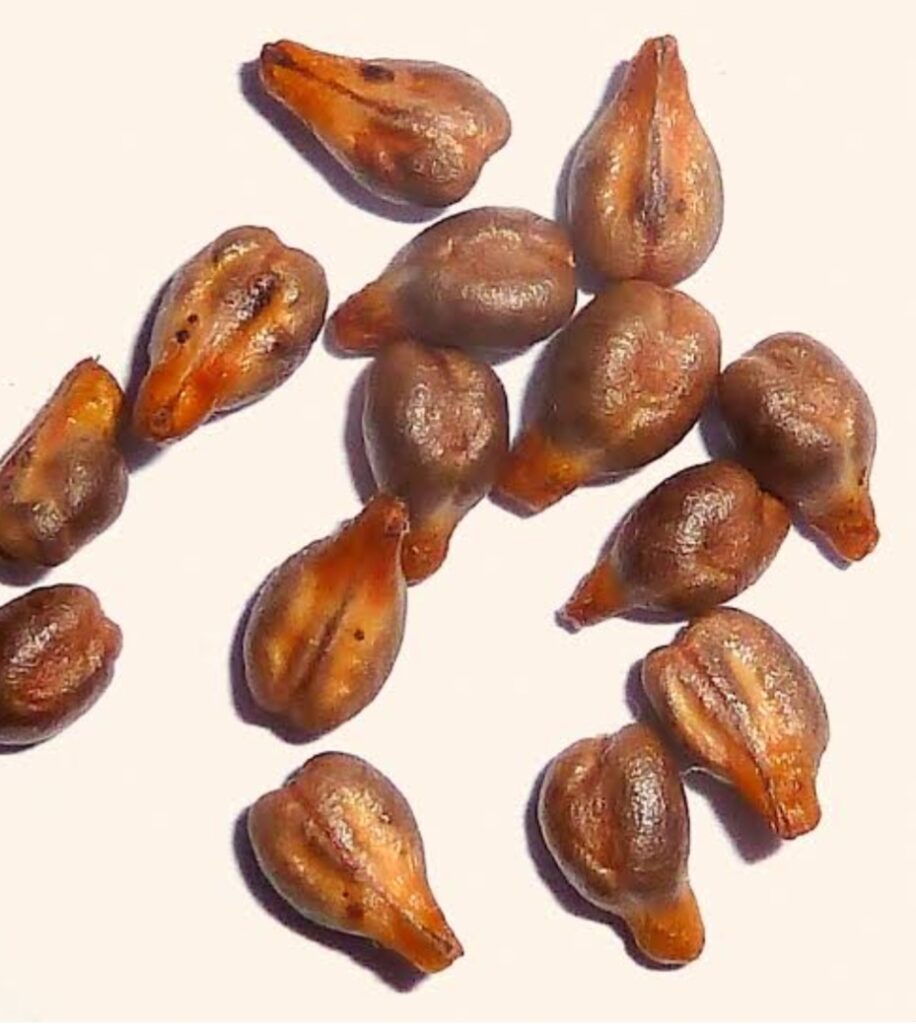
BENEFITS AND USES OF GRAPES
1. CULINARY: Grapes are eaten raw, dried (as raisins, currants and sultanas), or cooked.
2. Depending on grape cultivar, grapes are used in winemaking.
3. Grapes can be processed into a multitude of products such as jams, juices, vinegars and oils.
4. Grape juice can be fermented and made into wine, brandy, or vinegar. Grape juice that has been pasteurized, removing any naturally occurring yeast, will not ferment if kept sterile, and thus contains no alcohol. In the wine industry, grape juice that contains 7–23% of pulp, skins, stems and seeds is often referred to as “must”. In North America, the most common grape juice is purple and made from Concord grapes, while white grape juice is commonly made from Niagara grapes, both of which are varieties of native American grapes, a different species from European wine grapes. In California, Sultana (known there as Thompson Seedless) grapes are sometimes diverted from the raisin or table market to produce white juice.
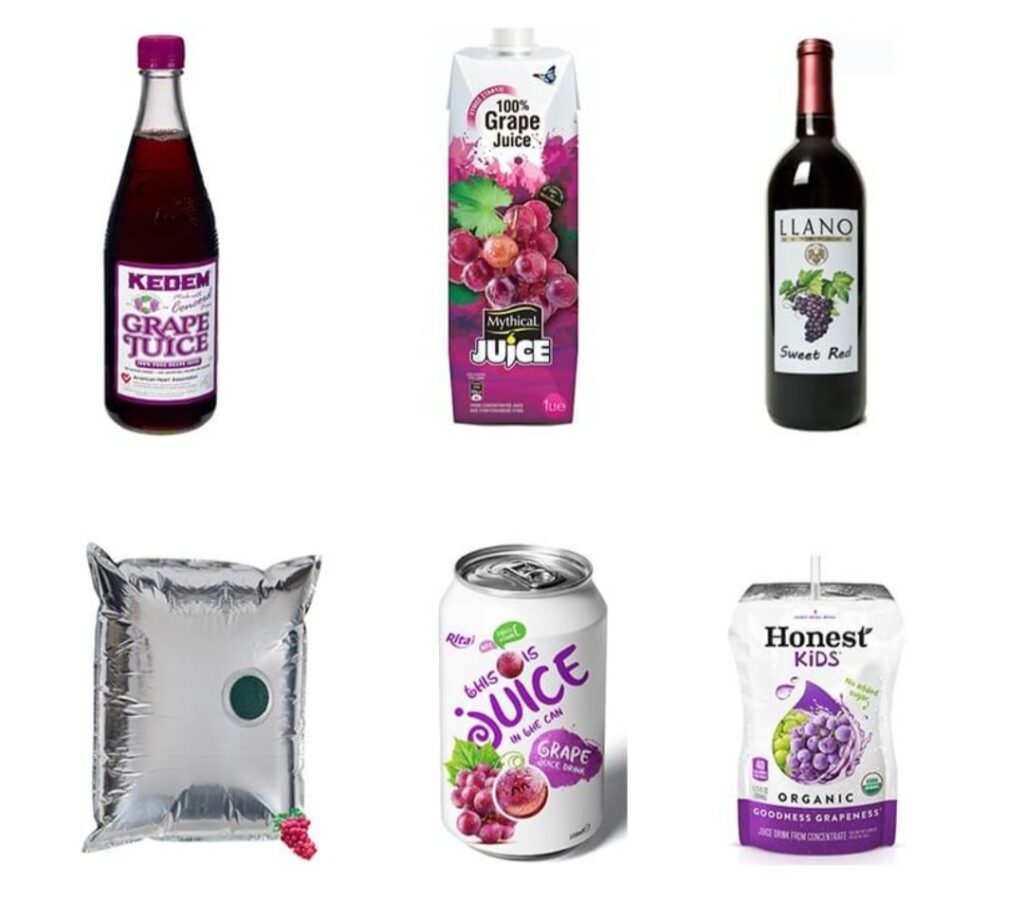
5. VINEGARS: Husrum, also known as verjuice, is a type of vinegar made from sour grapes in the Middle East. It is produced by crushing unripened grapes, collecting and salting the juice, simmering it to remove foam, and then storing it with a layer of olive oil to prevent contamination and oxidation.
6. Verjuice is also used as an acidic ingredient in salads and stuffed vegetables
7. POMACE AND PHYTOCHEMICALS: Winemaking from red and white grape flesh and skins produces substantial quantities of organic residues, collectively called pomace (also “marc”), which includes crushed skins, seeds, stems, and leaves generally used as compost.
8. Grape pomace – some 10–30% of the total mass of grapes crushed – contains various phytochemicals, such as unfermented sugars, alcohol, polyphenols, tannins, anthocyanins, and numerous other compounds, some of which are harvested and extracted for commercial applications (a process sometimes called “valorization” of the pomace).
9. SKIN: Grape skin contains Anthocyanins which is a polyphenolics in purple grapes, whereas flavan-3-ols (that is, catechins) are the more abundant class of polyphenols in white varieties. Total phenolic content is higher in purple varieties due almost entirely to anthocyanin density in purple grape skin compared to absence of anthocyanins in white grape skin. Phenolic content of grape skin varies with cultivar, soil composition, climate, geographic origin, and cultivation practices or exposure to diseases, such as fungal infections.
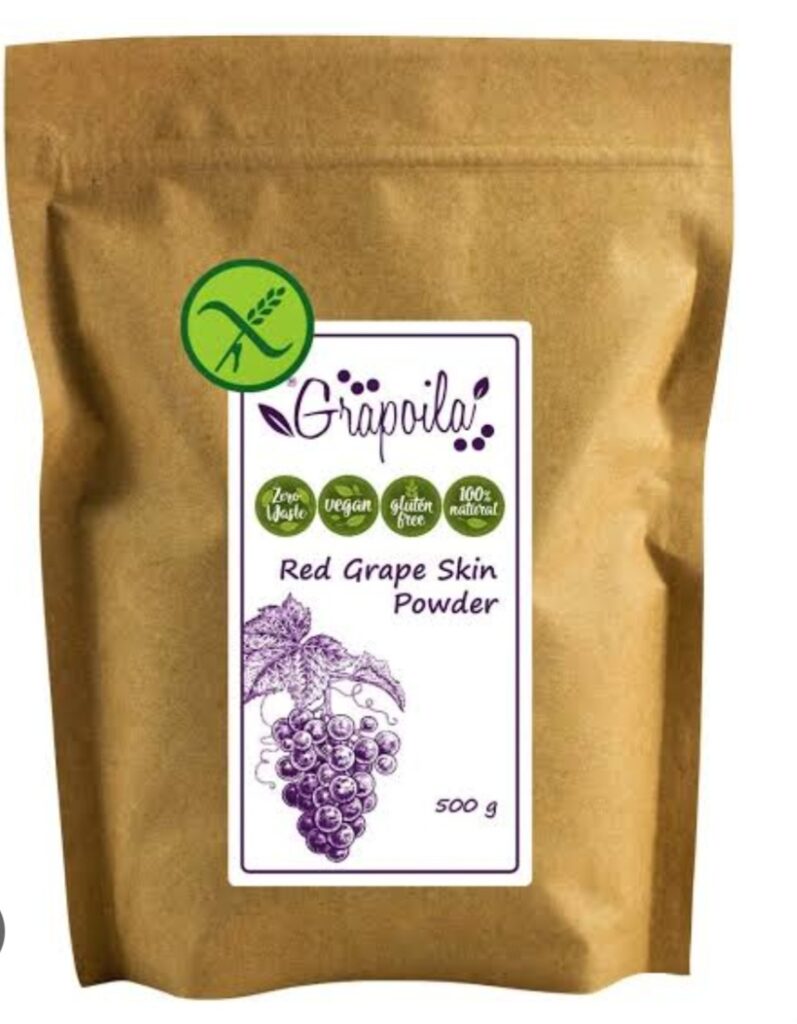
10. Muscadine grapes contain a relatively high phenolic content among dark grapes. In muscadine skins, ellagic acid, myricetin, quercetin, kaempferol, and trans-resveratrol are major phenolics. Phenolic compounds perform the following functions: antioxidant, anti-inflammatory, and anticancer properties. They also help plants defend themselves against pathogens.
11. The flavonols syringetin, syringetin 3-O-galactoside, laricitrin and laricitrin 3-O-galactoside are also found in purple grape but absent in white grape. These compounds help plants attract pollinating insects; combate environmental stresses, such as microbial infection; and regulating cell growth. They have antioxidant properties and may lower risk of heart attack or stroke.
12. SEEDS: Muscadine grape seeds contain about twice the total polyphenol content of skins. Oil can also be extracted from the seeds. The oil can be used in cosmeceuticals and skincare products.
13. Grape seed oil also contain tocopherols (vitamin E) and high contents of phytosterols and polyunsaturated fatty acids such as linoleic acid, oleic acid, and alpha-linolenic acid.
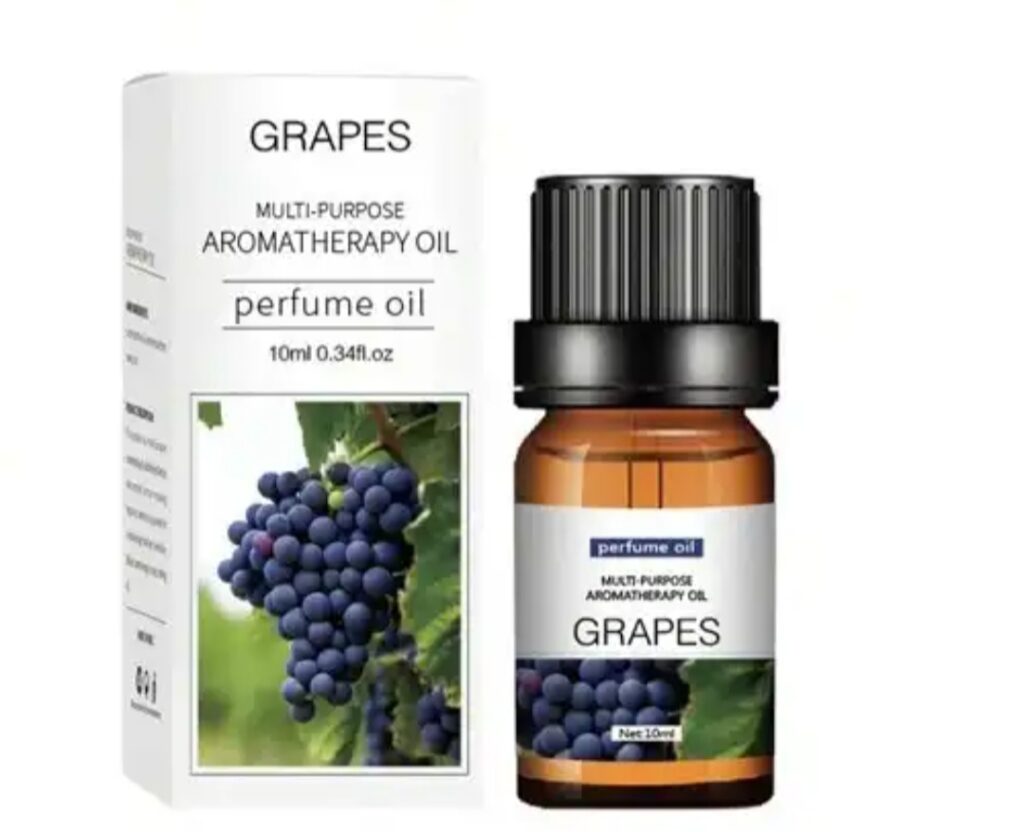
14. RESVERATROL: Grapes contain resveratrol, an antioxidant that may help fight disease. It is a stilbene compound found in widely varying amounts among grape varieties, primarily in their skins and seeds. Muscadine grapes have about one hundred times higher concentration of stilbenes than pulp. Fresh grape skin contains about 50 to 100 micrograms of resveratrol per gram. Resveratrol has many functions, including antioxidant, anti-inflammatory, and neuroprotective properties. It also have anti-cancer, antimicrobial, and anti-aging properties.
15. FRENCH PARADOX:
Comparing diets among Western countries, researchers have discovered that, although French people tend to eat higher levels of animal fat, the incidence of heart disease remains low in France. This phenomenon has been termed the French paradox and is thought to occur due to the protective benefits of regularly consuming red wine, among other dietary practices. Alcohol consumption in moderation may be cardioprotective by its minor anticoagulant effect and vasodilation.
16. USING GRAPE LEAVES IN CUISINE (DOLMA):
Although adoption of wine consumption is generally not recommended by health authorities, some research indicates moderate consumption, such as one glass of red wine a day for women and two for men, may confer health benefits. Alcohol itself may have protective effects on the cardiovascular system.
17. Tatjana Zlatkovic/Stocksy
Grapes are highly nutritious, sweet as candy, and have been essential to the good life since the dawn of civilization. Served in fresh bunches, in dried snack-friendly nuggets, or with their essence squeezed and fermented into intoxicating elixirs, grapes take on various forms to satisfy our appetites.
18. Grapes are high in antioxidants, rich in vitamins such as vitamin K, E, C, B1 and B2, which are present in lesser amounts in raisins and potassium, to name just a few of the nutrients they hold within them. This means they could have numerous health benefits, such as boosting heart health, and lowering the risk of type 2 diabetes.
19. According to the NMCD, grape seed and grape leaf extracts are possibly effective for addressing symptoms of poor blood flow in the legs, such as chronic venous insufficiency.
20. IMPROVE IMMUNE HEALTH:
Grapes are nutrition powerhouses. They are packed with vitamin C, a powerful antioxidant that plays key roles in immune system health, connective tissue development, and wound healing.
21. Grapes also impact gut bacteria which further boosts immune health.
22. IMPROVE BONE HEALTH:
Grapes are a great source of vitamin K, which helps with blood clotting and maintaining healthy bones.
23. PROTECTION AGAINST OXIDATIVE STRESS:
Grapes are also rich in antioxidants, which help protect the body’s cells against oxidative stress, a mechanism linked to cancer, heart disease, and Alzheimer’s disease. In particular, certain types of grape, such as pearl black grapes and summer black grapes are especially high in antioxidants.
24. IMPROVE KIDNEY FUNCTION:
Grapes are really high in potassium, which is important for kidney function.
25. Low potassium levels are also a concern across America, as it’s a nutrient that people generally are not getting enough of. Grapes can help potassium levels with some grapes.
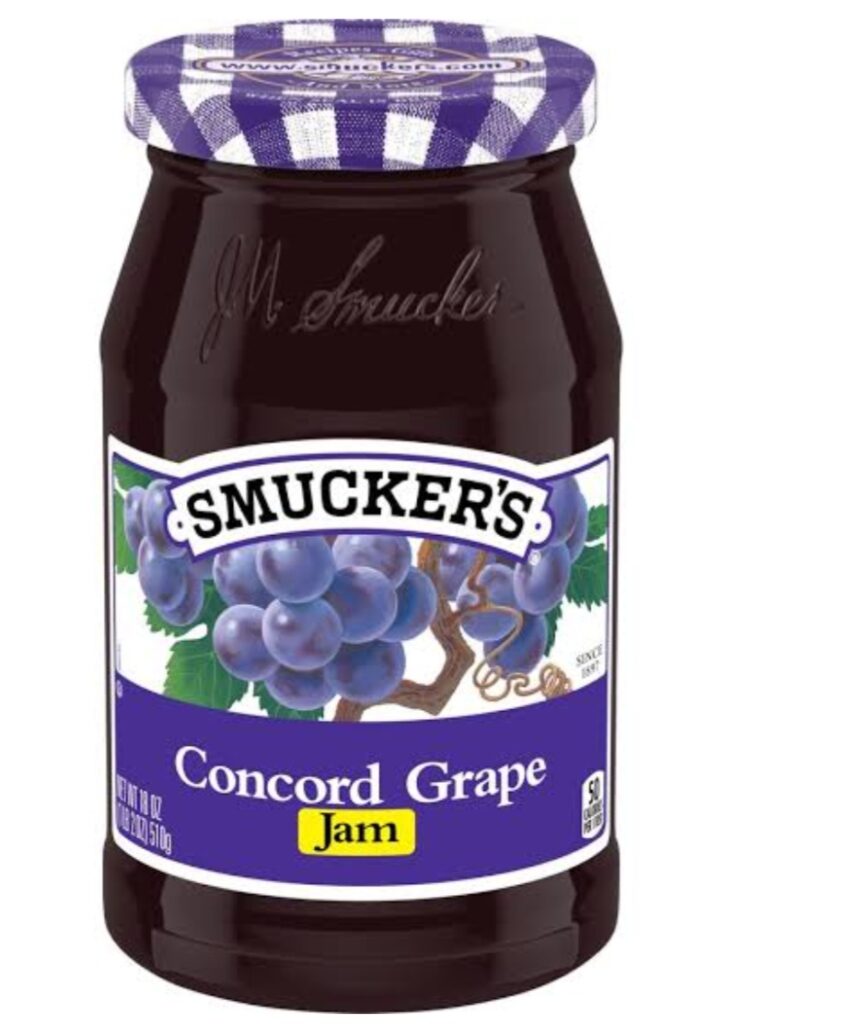
26. LOWER BLOOD PRESSURE AND BOOST HEART HEALTH:
A 2019 review of 15 studies involving 825 participants suggested that grape seed extract might help lower levels of LDL cholesterol, total cholesterol, triglycerides, and the inflammatory marker C-reactive protein. The individual studies, however, were small in size, which could affect the interpretation of the results.
Another study from 2022 also found that many of the bioactive compounds in grapes could mean they are good for lowering blood pressure. Some of these compounds may lower the amount of molecules that cause vasoconstriction, which is when the blood vessels tighten, and can lead to higher blood pressure. Researchers concluded that more studies are needed to draw conclusions.
Researchers also note that neither of these studies involved whole grapes, but used grape extract.
27. LOWER THE RISK OF TYPE 2 DIABETES:
Blueberries, darker grapes, and apples are all rich in the pigment anthocyanin, a flavonoid with antioxidant properties. Additionally, grapes have a medium glycemic load (a measure of food’s ability to raise blood glucose) of 11 per serving. Eaten in moderation, they can be part of a healthy diet and help with blood sugar control.
28. WEIGHT LOSS:
While grapes don’t actually affect any physiological mechanisms that could promote weight loss directly, swapping unhealthy sweet treats like cookies and candy for fruits like grapes, is an excellent way to help manage body weight.
29. As sweet-tasting as grapes are, 10 of them contain only 34 calories and 9 g of carbohydrates (2 and 3 percent, respectively), of human daily value based on a diet of 2,000 calories and 300 g of carbs per day. therefore, grapes are great fiber-rich substitute for junk-food snacks or sugary drinks.
30. People use grape for poor circulation that can cause the legs to swell (chronic venous insufficiency or CVI). Taking grape seed extract or proanthocyanidin, a chemical in grape seeds, by mouth seems to reduce symptoms of CVI such as tired or heavy legs and pain.
31. It is also used for eye stress, high cholesterol, obesity, and many other conditions. But there is no good scientific evidence to support most of these uses.
32. As medicine, whole grape extracts, grape seed extracts, grape leaf or vine extracts, grape juices, and grape pomaces have been used. Grape seed and grape vine extracts are also used in creams, ointments, and sprays.
33. When applied to the skin: Grape seed oil is possibly safe when used for up to 3 weeks. There isn’t enough reliable information to know if other parts of grape are safe to use
34. Tartaric acid occurs naturally in fruits such as grapes (Vitis). Tartaric acid is a good acidulant in food, providing a tart flavor and lowering the pH level of products, often used in baking to enhance leavening and as a preservative due to its acidity-regulating properties; it also acts as an antioxidant and flavor enhancer in various food applications
35. Grapes contain such minerals as calcium and phosphorus and are a source of vitamin A.
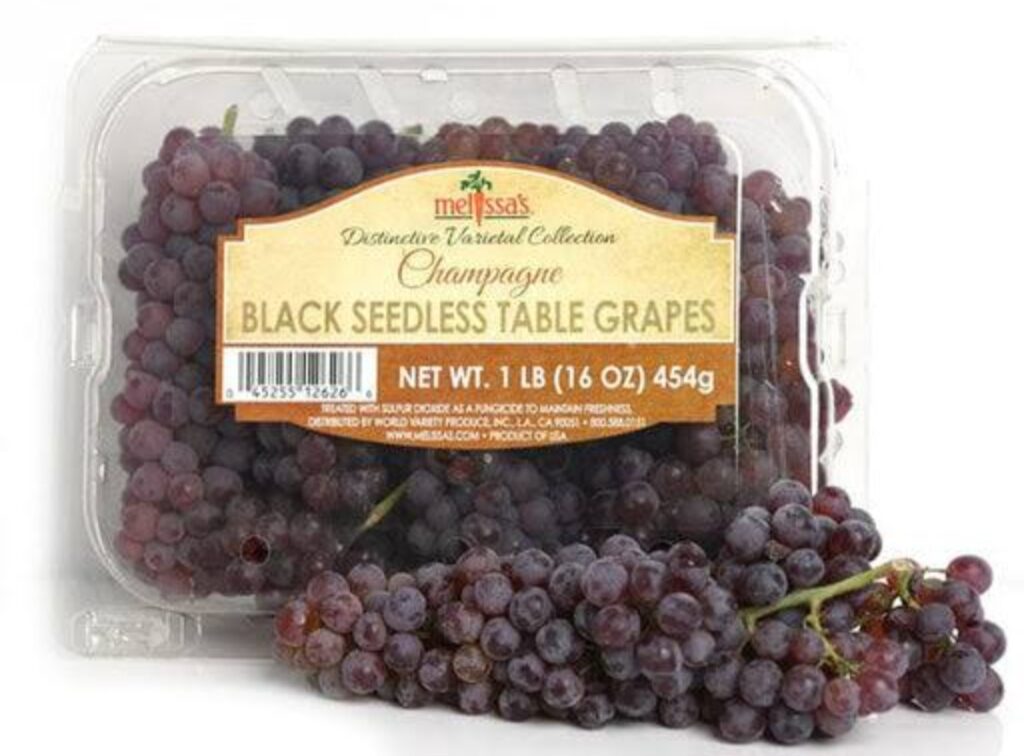
36. All grapes contain sugar (glucose and fructose) in varying quantities depending upon the variety. Those having the most glucose are the most readily fermented.
SIDE EFFECTS OF CONSUMING GRAPES
1. GRAPE AND RAISIN TOXICITY IN DOGS:
The consumption of grapes and raisins presents a potential health threat to dogs. Their toxicity to dogs can cause the animal to develop acute kidney failure (the sudden development of kidney failure) with anuria (a lack of urine production) and may be fatal.
2. POSSIBLY INEFFECTIVE FOR HAY FEVER: Some people believe that grape reduces allergy symptoms. This is a misconception, taking grape seed extract by mouth does not seem to decrease seasonal allergy symptoms or the need to use allergymedications.
3. NAUSEA AND VOMITING CAUSED BY CANCER DRUG TREATMENT: Drinking grape juice 30 minutes before meals for a week following each cycle of chemotherapy does not seem to reduce nausea or vomiting caused by chemotherapy.
4. OVERACTIVE BLADDER: Drinking grape juice does not seem to improve overactive bladder in older males.
5. BREAST PAIN (MASTALGIA): Taking proanthocyanidin, a chemical found in grape seed extract, does not reduce breast tissue hardness, pain, or tenderness in people treated with radiation therapy for breast cancer.
6. OBESITY: Drinking grape juice or taking grape seed extract does not seem to reduce weight in overweight people. But it might help lower cholesterol and control blood sugar.
7. Eating large quantities of grapes might cause diarrhea. 8. Some people have allergic reactions to grapes and grape products. Some other side effects might include cough, dry mouth, and headache.
8. CHILDREN: Grapes are commonly consumed in foods. But keep in mind that whole grapes are a potential choking hazard for children aged 5 years and younger. Whole grapes should be cut in half or quartered before being served to children. There is not enough reliable information to know if grape is safe to use in amounts greater than those found in foods.
9. BLEEDING CONDITIONS: Grape extract might slow blood clotting. Taking grape extract might increase the chances of bruising and bleeding in people with bleeding conditions. But it is not clear if this is a big concern.
10. SURGERY: Grape extract might slow blood clotting. It might cause extra bleeding during and after surgery. Do not use grape extract at least 2 weeks before a scheduled surgery.
GRAPE COMBINATION WITH DRUGS
11. Some medications are changed and broken down by the liver. Grape might change how quickly the liver breaks down these medications. This could change the effects and side effects of these medications. For example, the liver can change the effect of Cytochrome P450 1A2 (CYP1A2) substrates, Cytochrome P450 2E1 (CYP2E1) substrates, Cytochrome P450 2C9 (CYP2C9) substrates and Cytochrome P450 2D6 (CYP2D6) substrates, as they interact with GRAPE
12. PHENACETIN INTERACTS WITH GRAPE:
Drinking grape juice might increase how quickly the body breaks down phenacetin. Taking phenacetin along with grape juice might decrease the effects of phenacetin.
13. MEDICATIONS THAT SLOW BLOOD CLOTTING: Anticoagulant / Antiplatelet drugs do interacts with GRAPE. Thus, slow down blood clotting. Taking grape extract along with medications that also slow blood clotting might increase the risk of bruising and bleeding.
14. MEDICATIONS CHANGED BY THE LIVER : Cytochrome P450 3A4 (CYP3A4) substrates do interact with GRAPE in the liver. Such drugs are broken down by the liver. Grape might change how quickly the liver breaks down these medications. This could change the effects and side effects of these medications.
15. CYCLOSPORINE (NEORAL, SANDIMMUNE) INTERACTS WITH GRAPE:
Drinking purple grape juice along with cyclosporine might decrease how much cyclosporine the body absorbs. This could decrease the effects of cyclosporine. Separate doses of grape juice and cyclosporine by at least 2 hours to avoid this interaction.
16. MIDAZOLAM (VERSED) INTERACTS WITH GRAPE:
Taking grape seed extract for at least one week might increase how quickly the body gets rid of midazolam. This might decrease the effects of midazolam. But taking only a single dose of grape seed extract doesn’t seem to have an effect on midazolam.
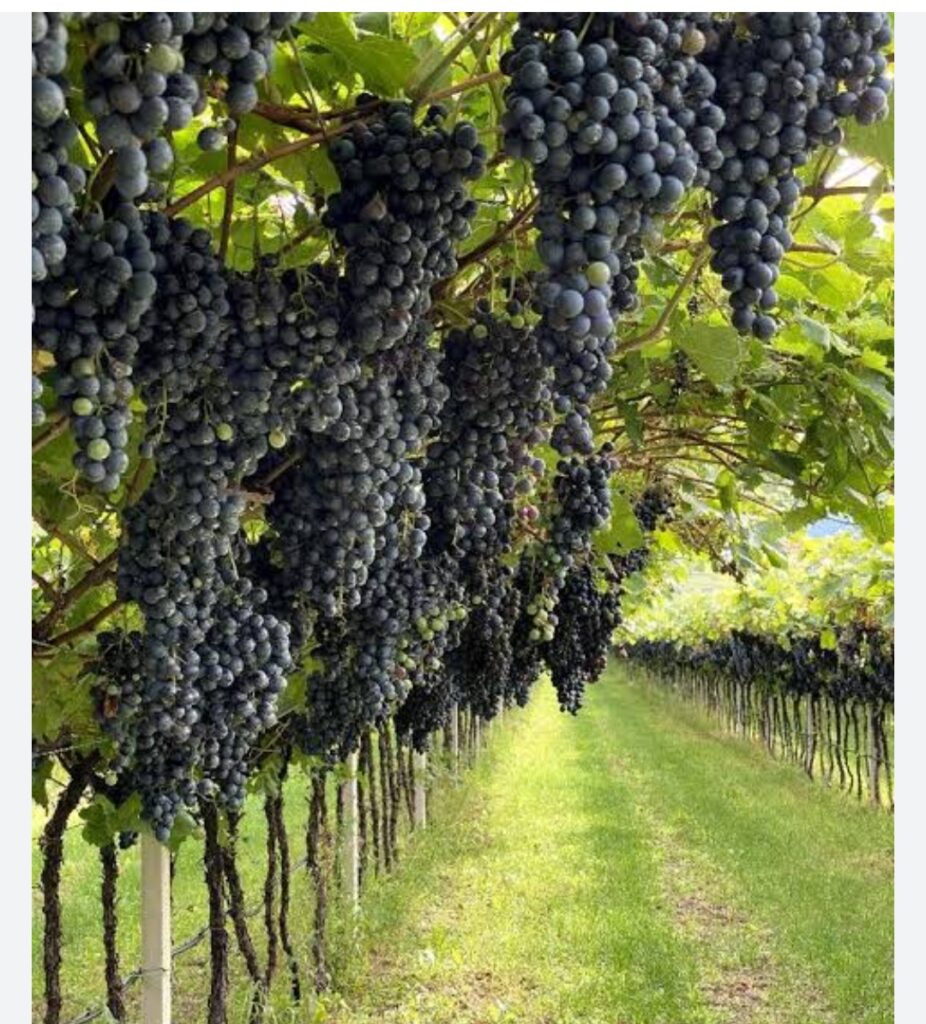
CLIMATIC REQUIREMENT
Grapes grow best in warm, sunny areas with well-drained soil, moderate rainfall, and good air circulation. The long, dry, warm weather condition and cool conditions are required for their best development. Severe cold weather conditions will destroy unprotected vines. Frosts occurring after the vines start growth will kill the shoots and clusters.
a. SUNLIGHT
Grapes need full sun, about 7–8 hours per day.
Less sun can lead to lower fruit production and poorer fruit quality.
b. RAINFALL
Grapes grow well in areas with less than 750 mm of annual rainfall.
Too much rainfall can cause fruit rot and disease.
Too little rainfall can stunt root development and reduce yield.
c. AIR CIRCULATION
Good air circulation helps prevent fungal diseases like powdery mildew.
Planting on a slope can help keep air moving.
Planting parallel to prevailing winds can increase air circulation.
d. TEMPERATURE
Avoid locations prone to late frosts, which can damage new shoots. American grapes are the most cold-hardy.
SOIL
Large, open, sunny space with good soil are required for good growth of grape plant. They can grow in a variety of soils, ranging from blow sands to clay loams, from shallow to very deep soils, from highly calcareous to noncalcareous soils, and from very low to high fertility. But they prefer well-drained, rich, organic soil.
Soil should be free of waterlogging (grapes cannot tolerate wet feet).
Soil that is too fertile can cause the vine to grow too fast and not bear well. Poor soils can be improved by adding compost or well-rotted manure.
The ideal soil pH is between 5.0 and 6.5, and the soil should contain organic matter.
PROPAGATION
Grapes can be grown in a small backyard farm, in pots and for large scale production on commercial farms. For commercial purposes,
commercial grape varieties are propagated with cuttings, segments or canes, or grafts. Cuttings are usually grown for one year in a nursery to develop roots. The grafts consist of a segment of a stem of a fruiting variety placed on a rootstock cutting. The rootstock cuttings are usually field budded to the desired fruiting variety and are planted in the vineyard. The point of union of grafted or budded vines must be situated well above the ground level in order to prevent the production of scion roots.
SPACING
Spacing of grapes depends on trailers and varieties selected for cultivation.
Grapes need about 50 to 100 square feet per vine if growing vertically on a trellis or arbor. They need about 6-8 feet between rows if planting horizontally in rows. Plus, seven to eight hours of direct sun each day.
TRAINING AND SUPPORT
Table grapes do not need a fancy support system. Although it is good to get them off the ground and onto a trellis where they can easily be pruned and harvested. Wine grapes on the other hand require a horizontal structure that gives them the support they need and allows for proper training.
If supports are to be provide, a support system like a south-facing wall, trellis, or arbor for the vines to trail on.
Training is necessary to develop a vine of desirable form. It is accomplished by pruning the young vine and then tying both it and its growth to the provided support.
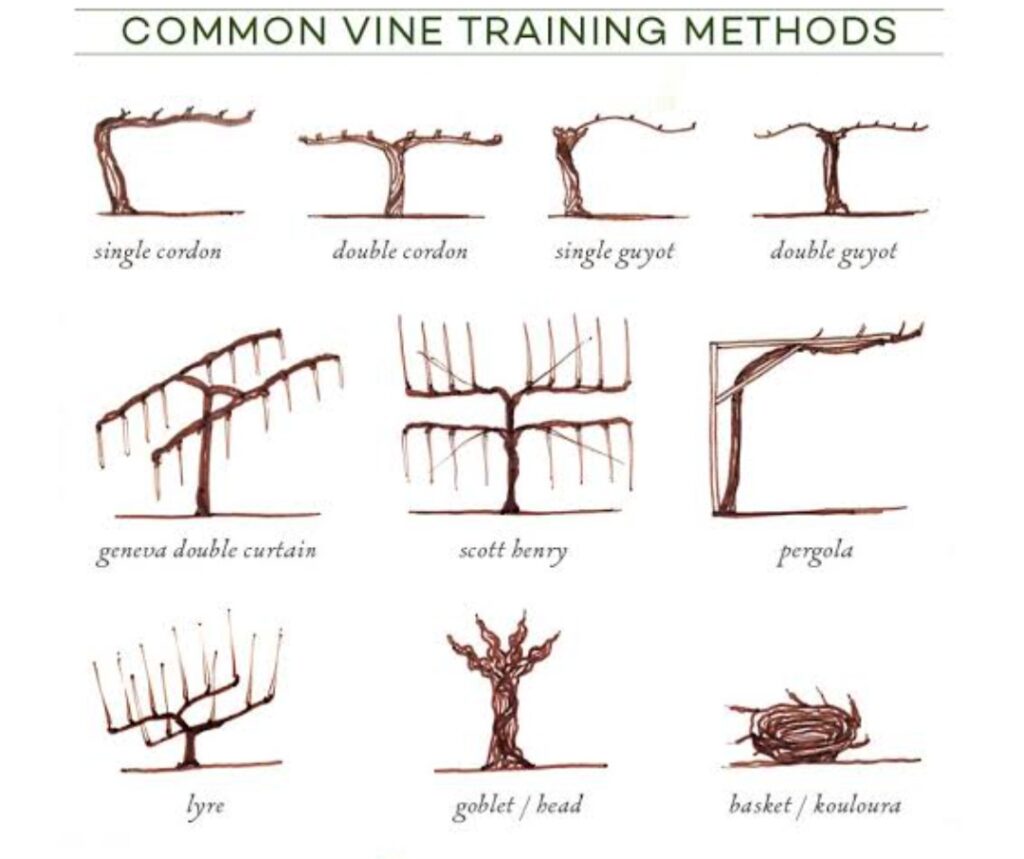
PRUNING
Grapes produce fruit on growth that is a year old. This makes it important to keep a pruning schedule to remove older growth and ensure new growth develops. This is the most important single vineyard operation in grape farming. With wine and raisin varieties, it is usually the sole means of regulating the crop, largely determining not only the quality of the fruit but also the quality of the wood for the next year.
The most common mistake made with grape pruning is not pruning hard enough. Once a grapevine is fully established, there is need to cut off more plants than leave them behind. 90 to 95 percent or more of the year’s growth should be removed, leaving the spurs or fruit canes or both. All unneeded older wood should be removed, and thin out and shorten the year-old wood. Only leave about 2 to 8 buds on a cane.
Pruning should also be done if plant is getting a little wilder unnecessarily.
WEED CONTROL: Weeds can Harbour pests that can damage the fruits of the plant. Also, weeds can compete with the plant for water, nutrients and shade the plant from receiving sunlight.
It is important to removed weeds around the plant environment. Avoid using herbicides like 2,4-D and dicamba near the grapevines, as they are highly sensitive to these chemicals. Also, notify nearby farms and neighbors to do the same to prevent unintentional damage.
THINNING
Thinning can also help the fruit get more sun and increase airflow to prevent powdery mildew. If the fruit is growing dense and shady, thinning might be require.
FERTILIZATION
Grapevines generally do not require much fertilizer, but can be fertilized sparingly. In early warm condition, N:P:K 10-10-10 or 10-20-20 fertilizer can be applied along with a layer of high-quality compost can also be applied to the base of the grapes. This can often provide the right amount of nutrients to the soil for the grapes to grow and produce annually.
HARVESTING
Grapes are harvested upon reaching the stage best suited for the intended use. Wine grapes are harvested when sugar content reaches its highest point, and the skins are covered with a waxy coating, trapping the yeasts that will later help produce fermentation. Delays in harvesting may cause unpleasant aroma in the wine produced or allow bacteria to attack the grape sugar.
PEST AND DISEASES OF GRAPES
DISEASES
1. POWDERY MILDEW: This is the most common disease affecting grapes. It can affect grapes in many ways, including reduced berry size, reduced sugar content, and off flavors in wine. It can also cause premature leaf drop and reduce crop yields.
Its symptoms include leaves appearing dusty or have a white powdery growth on the upper and lower surfaces, leaves curling upward in hot, dry weather, misshapen or cracked berries with blotchy appearance and vines showing dark brown to black blotchy lesions.
CONTROL AND TREATMENT
a. It can be controlled by improving air circulation
b. Avoid overcrowding
c. Use fungicides
d. Water early in the morning to let the tissue and soil dry quickly. Avoiding overhead watering.
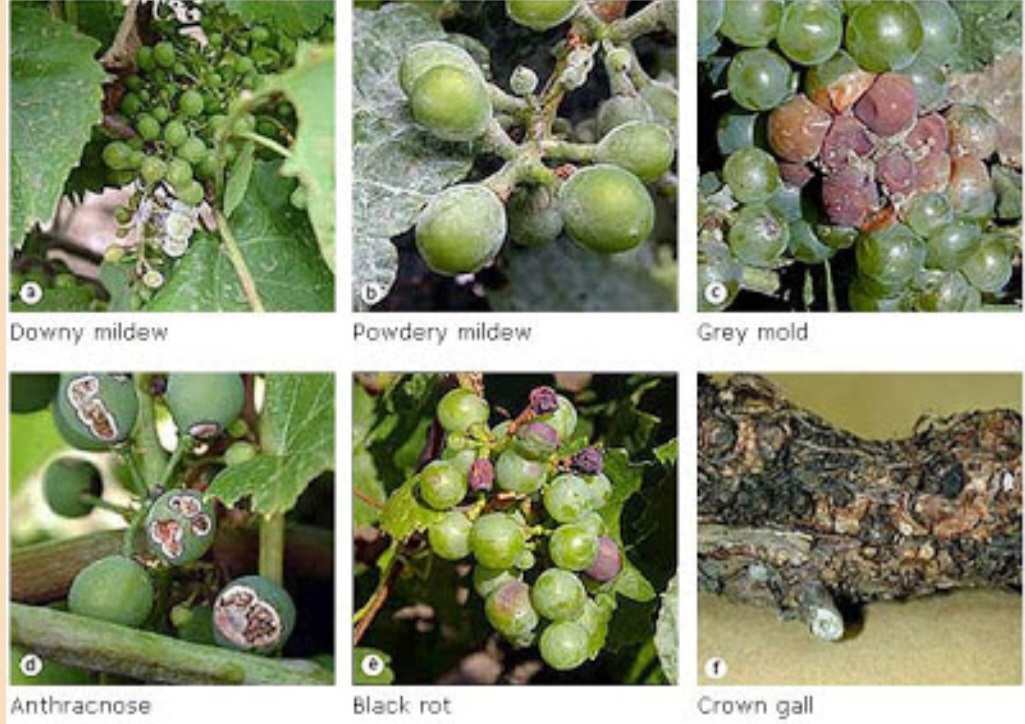
2. DOWNY MILDEW:
This is a fungal disease that result in reduced yield, poor fruit quality, and even plant death by attacking all green parts of the vine, particularly the leaves, resulting in symptoms like yellowing lesions, white cottony growth on the underside of leaves, and infected young berries turning grayish and dropping prematurely
CONTROL AND TREATMENT
To prevent fungal diseases like downy mildew, the following steps must be adhered to:
a. Prune the vines annually to maintain proper air circulation
b. Remove and discard any diseased portions of the vine promptly to stop the spread of infection
c. Clean up fallen leaves and fruit in the fall to reduce the risk of disease in the following season.
d. Spray fungicides.
3. DEAD BLOSSOM : Remove dead blossom parts where Botrytis can grow
Other diseases include; fruit rots, such as Botrytis bunch rot, black rot, phomopsis, anthracnose, and sour rot.
To minimize the risk of these diseases, especially with severe cases, continuous spraying is required.
PESTS
1. PARASITES: Grapes are subject to several parasites, including Phylloxera, a vine louse native to eastern America and spread to Europe on American vines in the late 1800s. It causes widespread vineyard damage.
It has being controlled by grafting the European varieties to American rootstock to provide a resistant variety to the parasite.
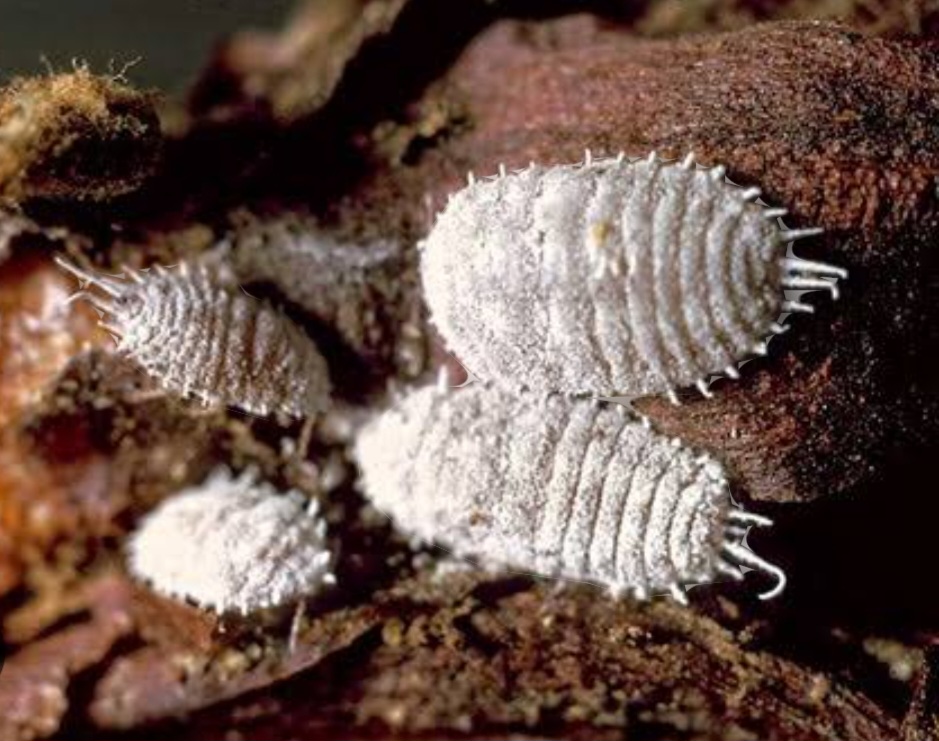
2. JAPANESE BEETLES (Popillia japonica): These beetles do severely damage grapes by feeding on their leaves and fruit. They defoliate and skeletonize the leaves by eating the tissue between the veins. This can reduce yields and stunt young plants. They also damage ripening fruit, especially early ripened or damaged fruit. Also, feeding injuries from Japanese beetles can attract other pests infestation, such as the green June beetle, and secondary pathogen infections.
CONTROL:
a. Monitor the crops by looking for signs of beetles or leaf defoliation
b. Control the beetles by using insecticides or organic repellents
c. Protect young vines from defoliation. Mature vines can tolerate a lot of defoliation, but young vines may be completely defoliated
3. Spotted wing drosophila
Yellow jackets and multicoloured Asian lady beetles do damage the ripening grapes. Spotted wing drosophila (SWD) can significantly damage grapes, particularly when they are nearing ripeness, by laying eggs within the fruit which hatch into larvae that feed on the pulp, causing the berries to soften, collapse, and potentially drop from the vine, impacting the quality and marketability of the grape harvest. They are more attracted to injured or cracked fruit.
CONTROL
Grape growers need close monitoring of their vineyards for SWD activity and implement control strategies like insecticides or exclusion netting when necessary to minimize damage.
Organophosphate insecticide, malathion also will control spotted wing drosophila, but malathion is very toxic to bees and natural enemies of other pests in the garden so care must be taken to keep the application on the target plant and avoid drift and runoff.
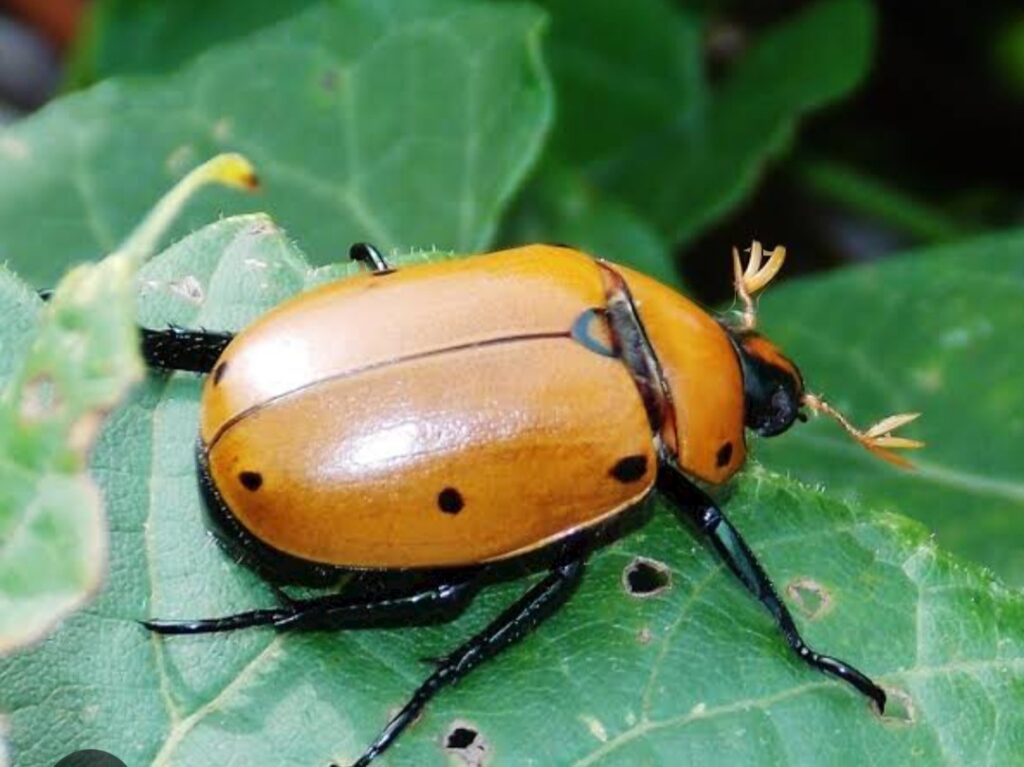
4. BIRDS: Birds like house finches, California quail, Mourning doves, Ring-necked pheasant, Scrub-jays, Wild turkeys and white-crowned sparrows do peck at grapes and berries damaging the fruit. They cause significant damage to the fruits, reducing the yield and quality of grapes. Bird damage can also lead to secondary spoilage from molds, bacteria, and insects attack.
CONTROL:
a. Bird netting is considered the most effective way to reduce bird damage. Netting protect the ripening grapes from hungry birds.
b. Frightening devices like noisemakers, visual repellents, and scare eye balloons can be used to frighten birds from damaging the grape fruits.
c. Falconry, that is, using prey birds to hunt down grape-eating birds can be another effective method.
d. Trapping can be used to control specific bird species.
SELECTING AND STORING GRAPES
SELECTION
When selecting grapes at the store or farmer’s market, select bunches that have green, pliable stems and plump, firm berries.
The white, powdery coating on the grapes are there to offer natural protection against decay. But if grapes are soft, puckered, or brown in appearance, they are probably heading toward rot or raisin territory.
STORAGE
Store unwashed grapes dry in the refrigerator and then rinse them thoroughly before eating them. They will keep in store or counter for about three to five days, in the refrigerator 5 to 10 days, and in the freezer three to five months.
Freezing them brings out the sweetness, and they make a great frozen snack for a hot day, or a healthy alternative to juice pops for children and adults alike (cut them in half for those ages 5 and below).
